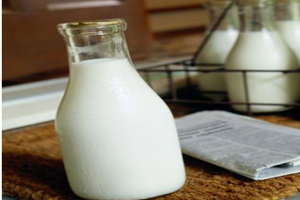| Fire ve zayi olma kavramı /The Concepts of Shrinkage and Loss of Goods |

|

|

|
| 29 Eylül 2011 | |

Normal FirelerBir malın fiziksel veya kimyasal özellikleri gereği buharlaşma, kuruma, çekme, sızma ya da dökülme gibi nedenlerden dolayı ortaya çıkan miktar azalmasına normal fire adı verilir. Ayrıca üretim işletmelerinde normal fire, bir mamulün içerdiği net hammadde miktarı ile üretim safhasında harcanan brüt hammadde miktarı arasındaki fark olarak da tanımlanabilir. Sabunun kuruması sonucu ağırlığını kaybetmesi, cam eşyanın alınması veya taşınması esnasında kırılması, sıvı nitelikteki malların taşınması esnasında dökülmesi veya buharlaşarak uçması ticari fireye örnek olarak gösterilebilir. Bu nitelikteki fireler genellikle belli oranlar dahilinde kalır. Normal fire olarak ortaya çıkan bu değer düşüklüklerinin takdir komisyonlarına takdir edilmesine gerek yoktur. Ancak burada dikkat edilmesi gereken nokta aynı mala ilişkin olsa dahi fire oranının firmadan firmaya değişebileceğidir. Bu nedenle fire oranları belli bir marj arasında belirlenir. Örneğin % 1-3 arası gibi. Bu nedenle bir mala ait firenin başlangıçta miktarı kesin olarak tespit edilemez. İşletmelerde bazı durumlarda ortaya çıkan olağanüstü durumlar nedeniyle malların miktarında önemli düşüklükler ortaya çıkabilir. Bu gibi durumlarda söz konusu malların değeri düşen mal olarak değerlendirilip takdir komisyonuna takdir edilmesi gerekmektedir. Zayi Olan MallarVergi kanunlarında zayi olma kavramına ilişkin herhangi bir tanımlama bulunmamaktadır. Sözlük anlamı ile zayi olma, kayıp, yok olma ve yitiktir. Ancak vergi kanunları ekonomik ilişkiler sonucu ekonomik değere bağlı olayları düzenlemekte olup vergi kanunları açısından zayi olma kavramına sözlük anlamıyla değil, iktisadi değer açısından bakılması gerekir. Çünkü ortada herhangi bir fiziksel değer (cisim) olmamasına rağmen oluşabilecek ekonomik değerler vergi kanunlarının ilgi alanına girmektedir. Buna en iyi örnek haklar gösterilebilir. Malların zayi olması aşağıdaki hallerde gerçekleşebilir. Kaza, dikkatsizlik ve benzeri nedenlerden dolayı meydana gelen zayi olayı çoğu zaman firenin kapsamına girebilir. Örneğin cam ticareti yapan bir şahsın, camları taşırken dikkat etmemesi sonucu bir tabaka camı düşürüp kırması gibi. Ancak daha önce de belirttiğimiz gibi malların miktarında önemli boyutta meydana gelecek azalışlar değeri düşen mal ve kapsamına girmektedir. Yangın, sel ve deprem gibi doğal afetler sonucu mallar zayi olabilir. Bu gibi durumlarda ticari malların tamamen yok olması söz konusudur. Bu gibi durumlarda malların ekonomik değerlerinin azalışı değil tamamen yok olması söz konusu olmaktadır. Dolayısıyla gerekli takdir komisyonu kararından sonra anılan malların bedelleri gider olarak yazılabilir. Bu gibi durumlarda “689. Diğer Olağandışı Gider ve Zararlar Hesabı”nın kullanılması gerekmektedir. Uygulamada en çok rastlanan zayi olma durumlarından birisi malların çalınması veya kaybolmasıdır. Çalınan ve kaybolan mallar vergi uygulaması açısından gider olarak dikkate alınamaz. The Concepts of Shrinkage and Loss of Goods
Normal Shrinkage
The loss that has occurred as the result of accidents or negligence, may frequently be included within the scope of shrinkage. For example the drop and breakage of a plate of glass during its transportation by a person engaged in the trading of glass, may be considered as shrinkage. However, as mentioned above, substantial declines in the quantity of the goods, are considered as decline in the value of goods, and not shrinkage. --------------------------------------------------------------------------------------------- Yukarıda yer verilen açıklamalar, konuya ilişkin genel bilgiler içermektedir. Özdoğrular smmm ltd. şti./ www.ozdogrular.com, işbu dokümanın içeriğinden kaynaklanan veya içeriğine ilişkin olarak ortaya çıkan sonuçlardan dolayı herhangi bir sorumluluk iddiasında bulunulamaz.
|













